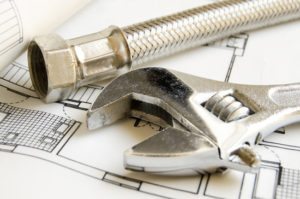 One of the most popular home improvement projects involves upgrading a bathroom. It doesn’t matter if you like to take showers or baths, most people want a shower in the home they buy. Believe it or not, this means that more homeowners than you might think spend a weekend installing or upgrading their showers. Fortunately, it a pretty simple process.
One of the most popular home improvement projects involves upgrading a bathroom. It doesn’t matter if you like to take showers or baths, most people want a shower in the home they buy. Believe it or not, this means that more homeowners than you might think spend a weekend installing or upgrading their showers. Fortunately, it a pretty simple process.
Handling Your Own Shower Drain Installation Project
The horizontal surface located at the bottom of your shower is the collector or pan. Usually, this consists of a non-slip surface draining towards the center of the shower. The goal of the drain is to get the water down the drain and out of the shower.
You can build a collector or buy one. Think it through if you plan to build it yourself.
It’s very important to get the sloping correct and you’ll want to make sure that the collector is waterproof. And I mean that you want to think through every aspect of building your own collector. It’s so much easier to buy a pre-cast collector at your local hardware store. You might like the idea of building one, but if any complications arise, you may regret it.
Either way, you want a pan that has a drain in the same spot as the original pan. Regardless of how you go about getting a pan, you should make every effort to use one that has the drain located in the same spot as the original pan. Moving the drain pipes can be a task, particularly if the builder used a unique framing structure. If you insist on moving the drain, plan to cut back the pipe or lengthen it. This could mean ripping up a huge hunk of the floor. In other words, you’ll be spending more than one weekend on the project.
Once the drain is lined up, the hook up is straightforward. The drainage pipe should be facing vertical up to the collector. More times than not, it will look like a “U”, which means it serves as a cleanout keeping nasty smells from coming out of the drain.
You’ll be needing a water tight connection between the drainage pipe and drain cap. Typically, you’ll be putting a coupling piece over the drainage pipe. Then you’ll use gaskets and screw it into the drain cap. The drain cap should act as a locknut – it screws directly onto the coupling.
Now for the tricky part – you want a watertight fit. There’s no room for error here. However, again, it’s a straightforward process. Make sure everything fits together, and use some plumber’s putty around the underside of the cap. Next, you’ll screw it back on. This should create a watertight seal between the pan and the cap and prevent water from slipping under it and damaging your framing under the shower.
If you buy a collector, they usually come with instructions. It sounds complex, but with a little work, it’s not as hard as it sounds. It’s not a bad idea to check out some YouTube videos on the subject as well.
If you choose not to do it or run into problems when you try, get in touch with me and I can give you numbers of plumbers in the area.

